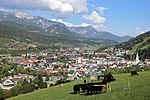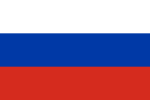The 2013 Slavic Cup is a regional invitational tournament for national teams in women's association football. The tournament was held from 7 to 11 March...
4 KB (82 words) - 18:51, 2 February 2020
supernatural beings that existed in nature. These supernatural beings in Slavic religion come in various forms, and the same name of any single being can...
15 KB (1,704 words) - 22:30, 1 July 2024
Gorani people (redirect from Gorani (slavic))
([ɡɔ̌rani], Cyrillic: Горани) or Goranci ([ɡɔrǎːntsi], Cyrillic: Горанци), are a Slavic ethnic group inhabiting the Gora region—the triangle between Kosovo, Albania...
35 KB (3,150 words) - 11:04, 22 August 2024
The 1962 FIFA World Cup was the 7th edition of the FIFA World Cup, the quadrennial international football championship for senior men's national teams...
36 KB (3,618 words) - 11:51, 24 August 2024
Hey, Slavs (category Slavic culture)
and widely considered to be the Pan-Slavic anthem. It was adapted and adopted as the national anthem of various Slavic-speaking nations, movements and organizations...
25 KB (1,994 words) - 14:15, 4 August 2024
Slovenian word for linden tree and the diminutive "ko". The word lipa is of Slavic origin. Lipko is spelt the same in every language and in every market where...
51 KB (1,232 words) - 15:38, 11 July 2023
The FIS Cross-Country Slavic Cup is a series of cross-country skiing events arranged by the International Ski Federation (FIS). It is one of the nine FIS...
9 KB (203 words) - 18:31, 22 March 2021
Elijah (redirect from Elijah's Cup)
converted Slavic tribes likely found him an ideal analogy for Perun, the supreme Slavic god of storms, thunder and lightning bolts. In many Slavic countries...
108 KB (13,974 words) - 21:05, 30 August 2024
Slovenes (category Slavic ethnic groups)
also known as Slovenians (Slovene: Slovenci [slɔˈʋéːntsi]), are a South Slavic ethnic group native to Slovenia, and adjacent regions in Italy, Austria...
67 KB (6,411 words) - 12:59, 24 August 2024
Pierogi (category Articles containing Old East Slavic-language text)
for one filled dumpling. It derives from Old East Slavic пиръ (pirŭ) and further from Proto-Slavic *pirъ, 'feast'. While dumplings as such are found throughout...
48 KB (4,906 words) - 20:45, 29 August 2024
vprisiadku dancing (Russian: вприсядку) is a type of male dance move in East Slavic (Russian, Ukrainian) dances. The dancer squats and thrusts one foot out...
9 KB (815 words) - 05:40, 27 August 2024
Blood brother (category Articles with text in Slavic languages)
sworn brotherhood in a ceremony, which was known as Greek: adelphopoiesis, Slavic languages: pobratimstvo in the Eastern Orthodox Churches and as Latin: ordo...
19 KB (2,096 words) - 14:27, 10 July 2024
Vikings (TV series) (redirect from Vikings (2013 TV series))
seasons 4 and 5), Byzantine Greek and Sami (in season 5), and Old East Slavic and Miꞌkmaq (in season 6). Lars Walker, in the magazine The American Spectator...
80 KB (6,200 words) - 21:46, 25 August 2024
Romanian language (section Slavic influence)
lexical permeability, reflecting contact with Thraco-Dacian, Slavic languages (including Old Slavic, Serbian, Bulgarian, Ukrainian, and Russian), Greek, Hungarian...
120 KB (10,857 words) - 11:32, 27 August 2024
romanized: russkiye) are an East Slavic ethnic group native to Eastern Europe. Their mother tongue is Russian, the most spoken Slavic language. The majority of...
120 KB (10,334 words) - 08:30, 27 August 2024
2016-12-13. Retrieved 2015-11-22. Pronk-Tiethoff, Saskia (2013). The Germanic loanwords in Proto-Slavic. Rodopi. ISBN 9789401209847. Róna-Tas, András (1999)...
20 KB (2,343 words) - 00:48, 24 August 2024
program called the Revival Process which required ethnic minorities to adopt Slavic names and barred their languages. As a result, Süleymanoğlu was forced to...
27 KB (1,809 words) - 16:09, 21 August 2024
Slavic principality of Carantania. During the period of German colonization, the place gradually acquired a Germanic character, although many Slavic elements...
7 KB (532 words) - 15:13, 20 August 2024
Slavia Liberec so that the Czech footballers could affirm their club's Slavic character at a time when the Nazi regime in neighbouring Germany already...
41 KB (1,892 words) - 23:11, 31 August 2024
recognised group in Europe between the 3rd and 8th centuries CE. The first East Slavic state, Kievan Rus', arose in the 9th century, and in 988, it adopted Orthodox...
372 KB (33,713 words) - 13:21, 30 August 2024
Lime tree in culture (category Slavic mythology)
folklore of a number of cultures. In old pagan Slavic mythology, the linden (lipa, as called in all Slavic languages) was considered a sacred tree. In Poland...
16 KB (1,913 words) - 22:12, 1 June 2024
Bulgarians (category Slavic ethnic groups)
(Bulgarian: българи, romanized: bŭlgari, IPA: [ˈbɤɫɡɐri]) are a nation and South Slavic ethnic group native to Bulgaria and its neighbouring region, who share a...
142 KB (13,526 words) - 06:27, 20 August 2024
Borscht (category Slavic cuisine)
sphondylium), an herbaceous plant growing in damp meadows, which lent the dish its Slavic name. With time, it evolved into a diverse array of tart soups, among which...
106 KB (10,829 words) - 22:13, 26 August 2024
*Dyēus (section In Slavic tradition)
("day by day"), Lithuanian dienà and Latvian dìena ("day"), Slavic dъnъ ("day") or Slavic Poludnitsa ("Lady Midday"), Latin Dies, goddess of the day and...
61 KB (6,064 words) - 23:32, 24 June 2024
Lithuanian population revealed that Lithuanians are genetically close to the Slavic and Finno-Ugric speaking populations of Northern and Eastern Europe. Y-chromosome...
289 KB (24,517 words) - 12:19, 30 August 2024
Middle Ages, Ukraine was the site of early Slavic expansion and the area later became a key centre of East Slavic culture under the state of Kievan Rus',...
250 KB (22,401 words) - 13:16, 30 August 2024
Croats (category Articles with text in West Slavic languages)
Croatian: Hrvati [xr̩ʋǎːti]) or Horvati (in a more archaic version) are a South Slavic ethnic group native to Croatia, Bosnia and Herzegovina and other neighboring...
154 KB (15,556 words) - 12:16, 23 August 2024
Hajduk (category Slavic titles)
haidut or haydut is adapted from the Hungarian hajtó or hajdó just as many slavic words were adapted from Turkish in what is known as Turcizam or Turkification...
20 KB (2,018 words) - 16:46, 26 August 2024
as Bárhesz), and the Romanian colac. These names originated from Proto-Slavic kolo meaning "circle", or "wheel", and refer to the circular form of the...
24 KB (2,591 words) - 07:49, 7 August 2024
Fisherman and the Fish”in the Context of the Second Boldin Autumn], Japanese Slavic and East European Studies, 39: 2–25, doi:10.5823/jsees.39.0_2 Thompson,...
13 KB (1,343 words) - 08:40, 28 May 2024























